Heel effect on wind and water angles (Nov 2013)
The thrust of this article can be understood by a simple experiment. Hold your boat up with the sails on hard, the mast vertical and the boat angled so the wind hits the boat at about 30 degrees off the centreline. The sails should fill nicely. Now rotate the boat about its long axis. Before the mast becomes horizontal the sails will start to flap. From this simple experiment it becomes clear that as the boat heels the angle of attack decreases. This article explores how much.
Of course, in the real world the apparent wind changes because of changes in the wind and boat speed, but those effects will depend on the boat and the other conditions. What follows is a simple analysis that ignores changes in the apparent wind from these causes.
For the purposes of this article “angle of attack” means the angle the wind makes with the plane defined by the centreline of the boat and the mast. Figure 1 shows the reduction in this angle of attack as the heel angle is increased. It will be seen that the reduction is of the order of 3 to 4 degrees for a heel angle of 30 degrees and that this figure increases rapidly as the heel angle increases. This effect is amplified by the tendency of the boat to come closer to the wind in gusts as discussed in Behaviour/Balance series on this website, and together these effects help the boat cope with gusts.
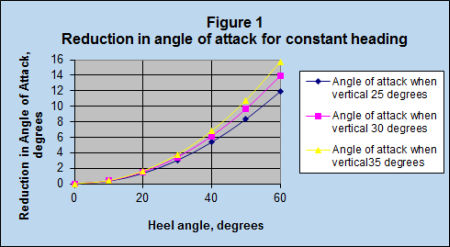 |
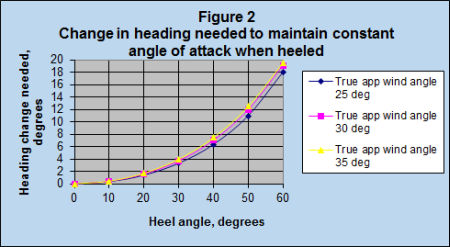 |
The other side of the coin is how far the boat has to bear away if the angle of attack is to be kept constant as the boat heels. Figure 2 shows this. The values are similar to above with the boat having to bear away about 4 degrees at 30 degrees heel to maintain the same angle of attack as when vertical.
Now the same thing applies to the keel and rudder. As the boat heels the angle of attack of the water on them decreases. Figure 3 shows this. The reduction is modest at 30 degrees (about 0.5 degrees) but increases rapidly.
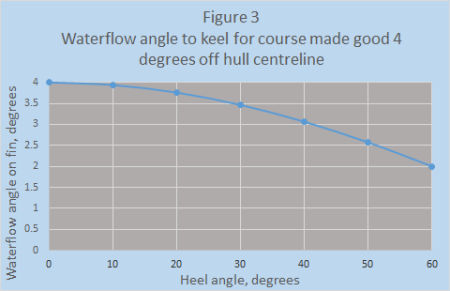 |
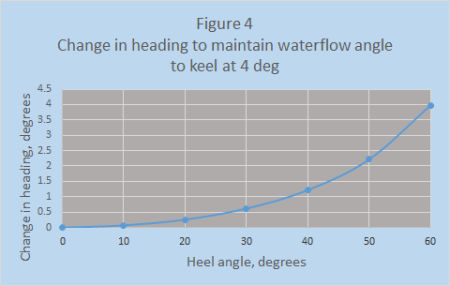 |
Usually as the boat heels the side force on the keel and rudder increases. Even if this were offset by an increase in speed, just to maintain the same water flow angle to the keel, the boat has to be headed further off wind. Figure 4 shows this, and it can be seen that even at 30 degrees heel the boat has to bear away 0.6 degrees to maintain the same water flow angle onto the keel, while at 40 degrees this increases to 1.22 degrees.
These effects are among the main reasons that sailing at high angles of heel does not pay: for example at 40 degrees the boat has to bear away by over a degree to maintain keel side force, even if the sails are allowed to feather. This amounts to over 2 metres over a typical 100 metre beat. To maintain drive in the sails may require even more.
Colin Thorne November 2013
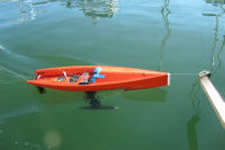
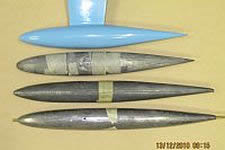
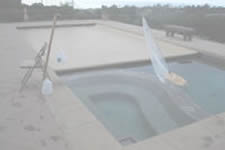
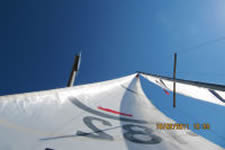
 Behaviour
Behaviour